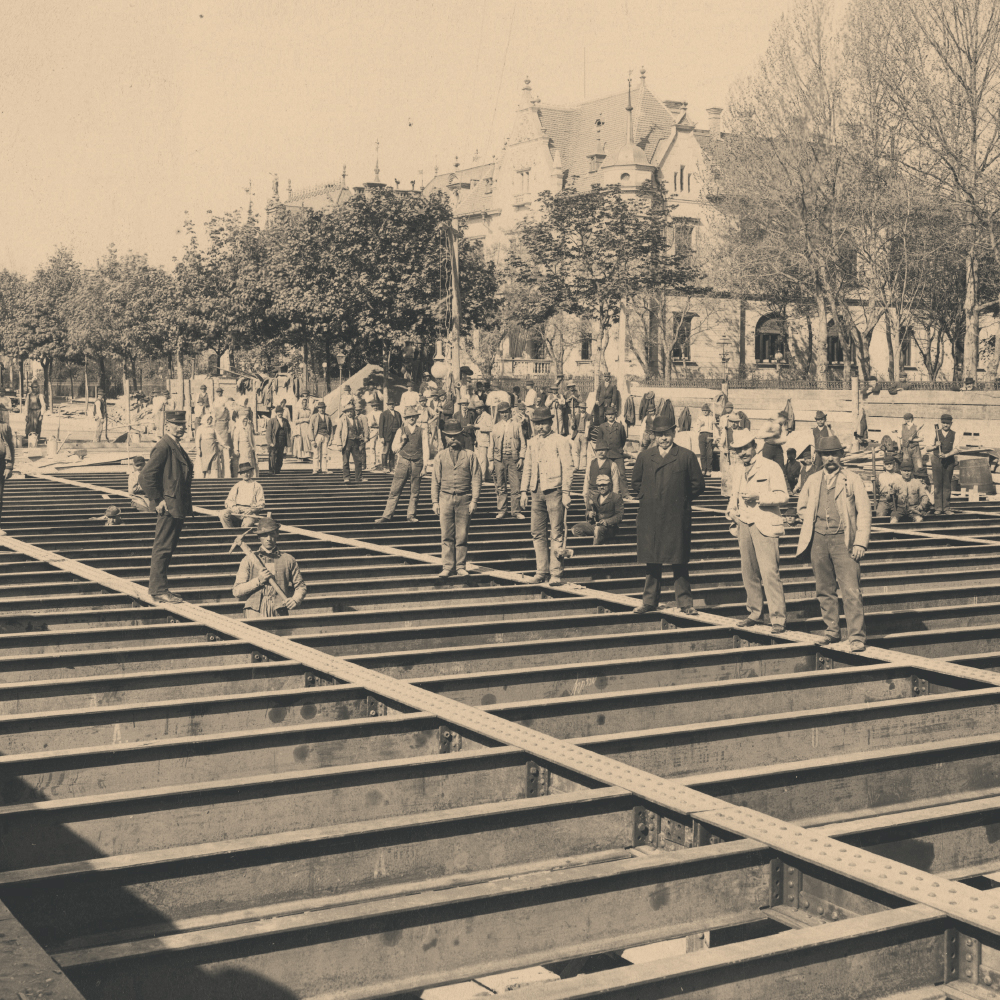
Digging started in early August 1894. Production works were assigned to the Siemens company, the ground and concrete works belonged to Róbert Wünsch, but obviously many other subcontractors worked on the project. The construction was controlled by Project Supervisor Ödön Vojtek. Their biggest challenge was under Oktogon, where tram railways operated on the surface right above the tunnel (just like today), and the main water pipes were running under the railway. The tunnel had to be steered between them (the Grand Boulevard was visibly lifted up slightly). Here the tunnel with a clear height of 2.85m runs above the water pipes, and below the roadway and tram railways.
From Gizella Square to the City Park – where the tracks came up to the surface (behind today’s Heroes’ Square) – 141,185 cubic metres of dirt was dug up. For the base and the coating of the tunnel more than 52,000 cubic metres of concrete were used, made from cement from Lábatlan and gravel from the Danube and Portland cement from Lábatlan. The supporting frame arrived from the factories of Resicza and Diósgyőr. The frame weighed 3,014,053 kilograms and had also been tested by very strict standards.
Its entire length was 3,688.76 metres, with 3,225.56 metres under the surface and 463.2 metres above it. The construction proceeded in record time. From the first shovel moves only 21 months passed before its grand opening, thanks to the thousands who worked hard on the project.
From Gizella Square in the city centre (formerly a hackney-coach station), the wagons reached surface near to the main entrance of the Millennium Exhibition before passing the zoo to its terminal at Artesian (Széchenyi) Bath. In the City Park, the Róbert Wünsch Bridge still marks the place where the wagons ran on the surface.











